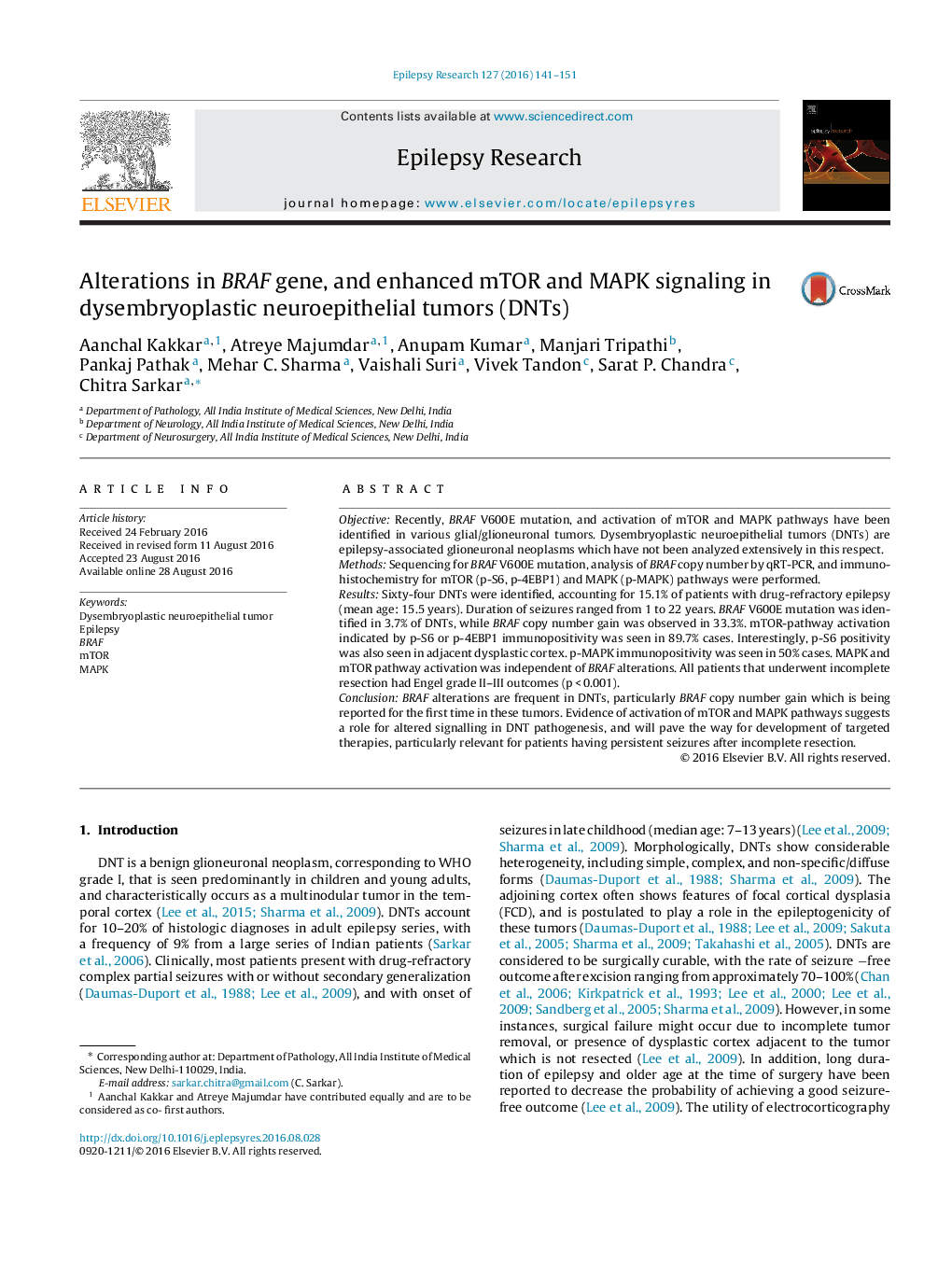| کد مقاله | کد نشریه | سال انتشار | مقاله انگلیسی | نسخه تمام متن |
|---|---|---|---|---|
| 6015023 | 1579896 | 2016 | 11 صفحه PDF | دانلود رایگان |

- BRAF V600E mutation is rare (3.7%) in Dysembryoplastic neuroepithelial tumors (DNT).
- BRAF copy number gain is frequent (33%) in DNTs, being reported for the first time.
- mTOR (89.7%) and MAPK (50%) activation in DNTs is shown on immunohistochemistry.
- Activation of mTOR and MAPK pathways is independent of BRAF alterations.
- Suggests a pathogenetic role; provides therapeutic targets in DNT patients.
ObjectiveRecently, BRAF V600E mutation, and activation of mTOR and MAPK pathways have been identified in various glial/glioneuronal tumors. Dysembryoplastic neuroepithelial tumors (DNTs) are epilepsy-associated glioneuronal neoplasms which have not been analyzed extensively in this respect.MethodsSequencing for BRAF V600E mutation, analysis of BRAF copy number by qRT-PCR, and immunohistochemistry for mTOR (p-S6, p-4EBP1) and MAPK (p-MAPK) pathways were performed.ResultsSixty-four DNTs were identified, accounting for 15.1% of patients with drug-refractory epilepsy (mean age: 15.5 years). Duration of seizures ranged from 1 to 22 years. BRAF V600E mutation was identified in 3.7% of DNTs, while BRAF copy number gain was observed in 33.3%. mTOR-pathway activation indicated by p-S6 or p-4EBP1 immunopositivity was seen in 89.7% cases. Interestingly, p-S6 positivity was also seen in adjacent dysplastic cortex. p-MAPK immunopositivity was seen in 50% cases. MAPK and mTOR pathway activation was independent of BRAF alterations. All patients that underwent incomplete resection had Engel grade II-III outcomes (p < 0.001).ConclusionBRAF alterations are frequent in DNTs, particularly BRAF copy number gain which is being reported for the first time in these tumors. Evidence of activation of mTOR and MAPK pathways suggests a role for altered signalling in DNT pathogenesis, and will pave the way for development of targeted therapies, particularly relevant for patients having persistent seizures after incomplete resection.
Journal: Epilepsy Research - Volume 127, November 2016, Pages 141-151